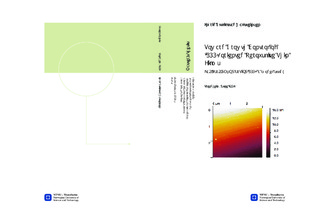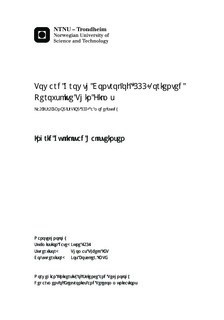| dc.contributor.advisor | Tybell, Thomas | nb_NO |
| dc.contributor.advisor | Boscker, Jos | |
| dc.contributor.author | Hallsteinsen, Ingrid Gullikstad | nb_NO |
| dc.date.accessioned | 2014-12-19T13:48:02Z | |
| dc.date.accessioned | 2015-12-22T11:47:28Z | |
| dc.date.available | 2014-12-19T13:48:02Z | |
| dc.date.available | 2015-12-22T11:47:28Z | |
| dc.date.created | 2012-11-10 | nb_NO |
| dc.date.issued | 2012 | nb_NO |
| dc.identifier | 566992 | nb_NO |
| dc.identifier | ntnudaim:8191 | |
| dc.identifier.uri | http://hdl.handle.net/11250/2370608 | |
| dc.description.abstract | Control of growth and surface morphology of perovskite oxide thin films is essential for future electronic devices based on such materials. Uncommon crystallographic orientations, like (111), are particularly interesting in order to control domain formations, but have been shown to grow in a rough manner, because of their polar surfaces. This work aims to elucidate the growth mode of (111) oriented systems, to enable smooth surface structured films. We have investigated the growth of La_{0.7}Sr_{0.3}MnO_3 (LSMO) thin films by pulsed laser deposition (PLD) on (111)oriented SrTiO_3 (STO), characterized by AFM and x-ray diffraction. Substrate surface preparation has been optimized to yield uniform straight step-and-terrace surface structures, as well as the ability to tune the surface structure by different surface preparations. The film surface structure is observed to duplicate the substrate surface; hence, control of the film surface structure is obtained. A detailed description of the growth mode, from thin films of only a few mono layers to thick films of 70nm is presented. The growth mode is complex showing in principle an unstable growth. For the first 20 mono layers (2nm) a roughening transition from step-flow to layer-by-layer is observed. At higher thicknesses a second transition is seen, where the surface breaks up to a 3D surface structure. The critical thickness of the second transition is delayed by reducing the deposition temperature, as expected for strained surfaces, resulting in epitaxial thin films of step-and-terraces structure at least 70nm thick. The crystallinity of the films has been confirmed by XRD measurements. The transition to 3D growth is shown to initiate at the step-edges, and stabilizes with step-bunched steps. A speculative discussion of step-induced strain, and consequently the surface breakup is presented. Furthermore magnetic measurements by VSM in room temperature are presented. The saturation magnetic moment is measured to be $330 emu/cm^3$ at room temperature, which is 100 emu/cm3 larger than other reported values for LSMO/STO(111). The improved understanding of substrate preparation and growth mode in LSMO/STO(111) is important for further work on oxide interfaces, as we believe these results can be expanded to other (111) systems. The magnetic measurements give a preliminary indication that high quality films are necessary to exploit the full potential of these materials. | nb_NO |
| dc.language | eng | nb_NO |
| dc.publisher | Institutt for elektronikk og telekommunikasjon | nb_NO |
| dc.subject | ntnudaim:8191 | no_NO |
| dc.subject | MTNANO Nanoteknologi | |
| dc.subject | Nanoteknologi for materialer | |
| dc.title | Toward Growth Control of (111)-oriented Perovskite Thin Films: La0.7Sr0.3MnO3/SrTiO3(111) a model study | nb_NO |
| dc.type | Master thesis | nb_NO |
| dc.source.pagenumber | 85 | nb_NO |
| dc.contributor.department | Norges teknisk-naturvitenskapelige universitet, Fakultet for informasjonsteknologi, matematikk og elektroteknikk, Institutt for elektronikk og telekommunikasjon | nb_NO |

